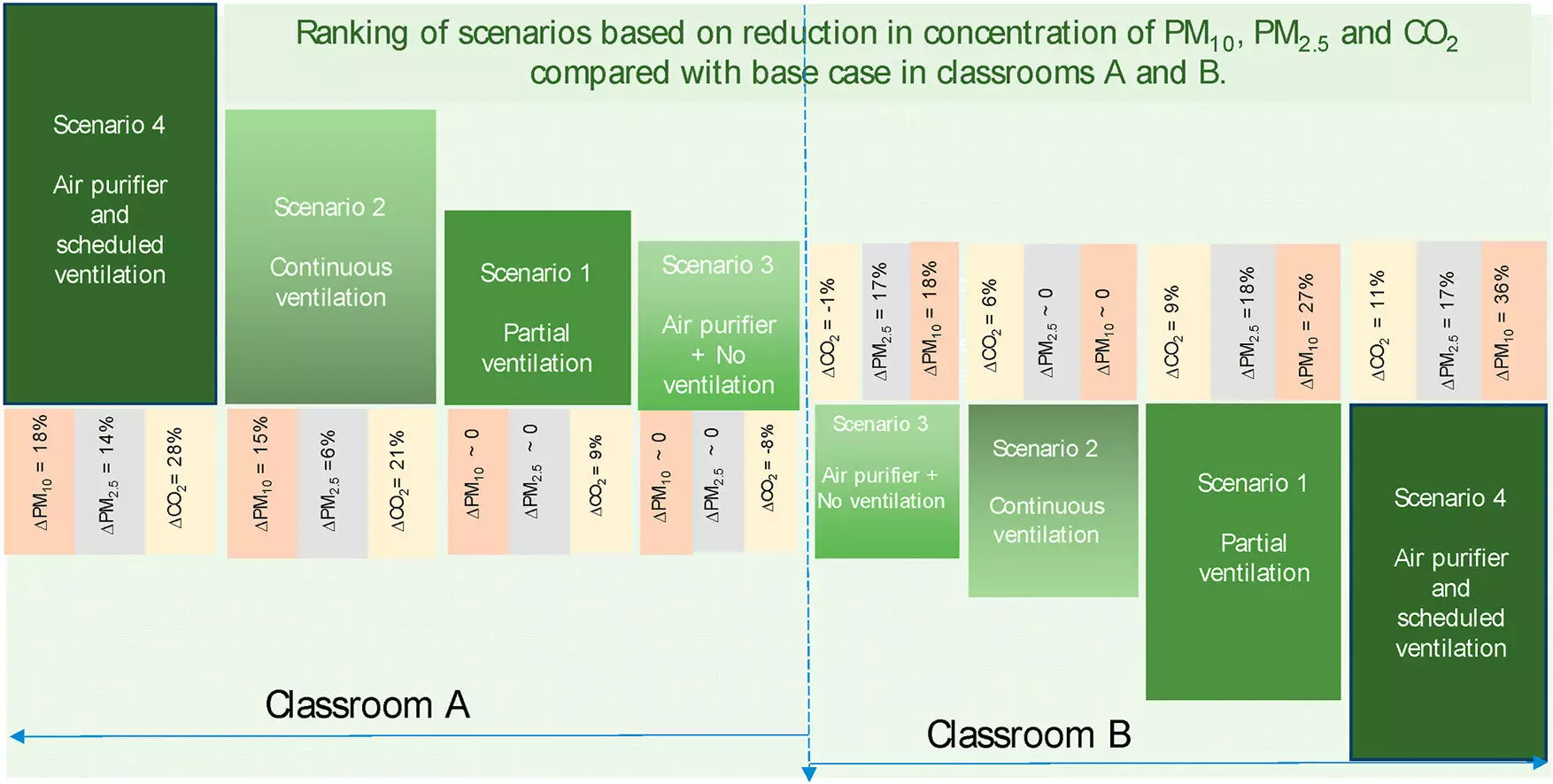Poor air quality in classrooms can have detrimental effects on students’ health and academic performance. According to a recent study conducted by the University of Surrey, schools can take proactive measures to enhance air quality by utilizing air purifiers during school hours and opening windows after hours. This approach has shown promising results in reducing pollution levels within classrooms and creating a healthier learning environment for students.
The study, led by researchers at Surrey’s Global Centre for Clean Air Research (GCARE), monitored pollution levels in classrooms located near a busy road in Guildford, UK. By implementing a combination of air purifiers and scheduled window openings, significant improvements in air quality were observed. Notably, coarse particle pollution decreased by 18% in the classroom closest to the road and 36% in the other classroom. Additionally, carbon dioxide levels saw a reduction of 28% and 11% in the respective classrooms.
Recommendations for Schools
Based on the findings of the study, the researchers emphasized the importance of adopting a tailored approach to improving air quality in classrooms. While using air purifiers and opening windows can be effective, it is essential to consider the specific characteristics and location of each classroom. This customized strategy can help schools maximize the benefits of air purifiers and window openings, leading to cleaner and healthier indoor air for students and teachers.
Enhancing air quality in classrooms is crucial for safeguarding the health and well-being of students, particularly in areas with high levels of air pollution. By implementing simple yet effective measures like using air purifiers and ventilating classrooms through window openings, schools can create a more conducive learning environment. This is especially important given the significant number of children globally who are exposed to poor air quality while attending school.
The study conducted by the University of Surrey highlights the importance of prioritizing air quality in educational settings. By taking proactive steps to improve indoor air quality through the use of air purifiers and strategic window openings, schools can create a healthier environment for students to thrive academically. It is essential for policymakers and school administrators to consider these findings and implement measures that prioritize the well-being of students and teachers alike.


Leave a Reply